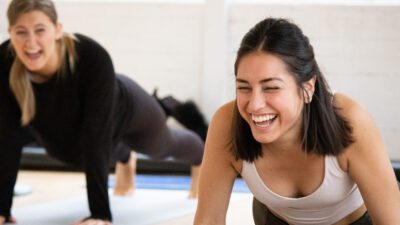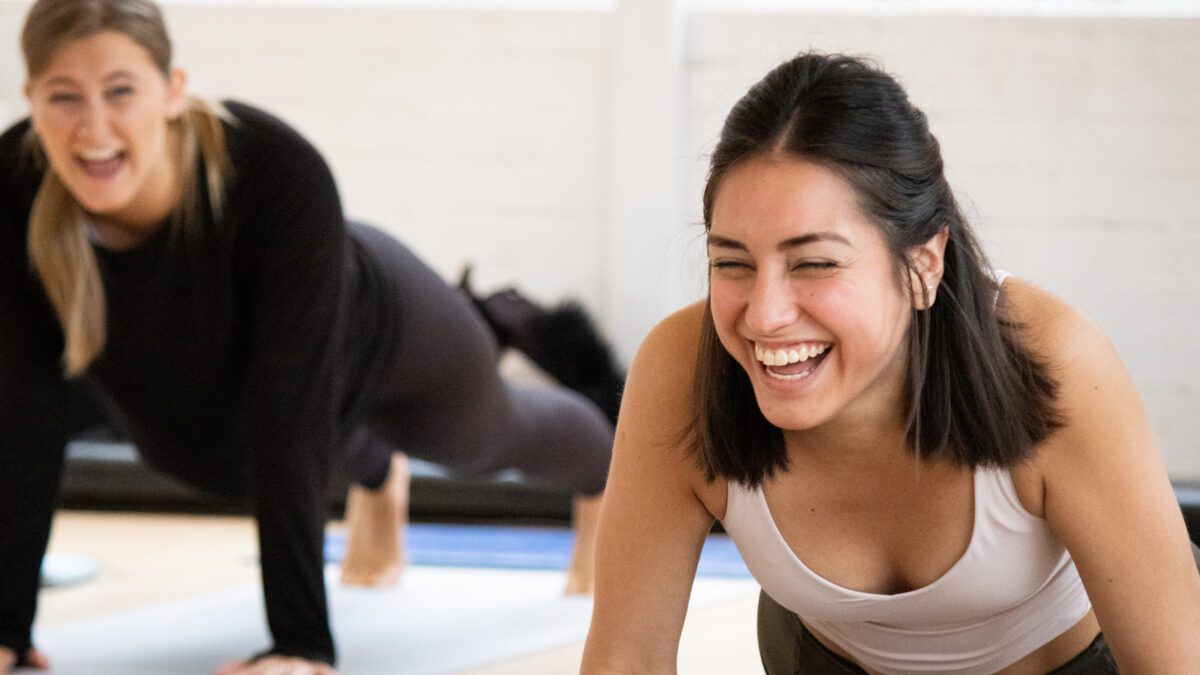

What is Pilates? A complete guide
Have you ever wondered whether Pilates is suitable for you? If yes, this article will discuss just how beneficial this workout is for everybody, regardless of age, gender, size, and fitness level.


Have you ever wondered whether Pilates is suitable for you? If yes, this article will discuss just how beneficial this workout is for everybody, regardless of age, gender, size, and fitness level.
Despite being popularized by celebrities and labeled as a fad by some, Pilates is a full-body workout with numerous health benefits. Whether you are an athlete, have a sedentary lifestyle, or are a complete beginner to exercise, this workout will meet your needs. Plus, it is very versatile, and you can do it in a studio, gym, or at home.
Pilates was developed in the early 20th century by Joseph Pilates, a German-born fitness specialist, as an injury recovery method for dancers and soldiers.
Originally called Contrology, this form of exercise is a low-impact one that focuses on strengthening the muscles while enhancing flexibility, balance, and posture at the same time. It targets your abs, glutes, hips, back, pelvic floor, and other body areas, predominantly working the deeper postural muscles that support and stabilise the spine.
Pilates combines breath work and movement, meaning that you have to be aware of your breathing and body movements.
This form of exercise gives you more freedom to carry out your daily tasks with no pain, and there is a lesser chance of injury than with other exercise forms. Doctors commonly recommend it for injury prevention and rehabilitation, and it is also beneficial to professional athletes. Many people are drawn to Pilates because they can achieve muscular development without bulking up. It also does not require as many repetitions for every move as other forms of exercise.
It also does not require as many repetitions for every move as other forms of exercises due to its focus on body awareness, the precision of movement, and control.
Despite the simple nature of the exercises, they can be challenging to do, especially for beginners.
Six key Pilates principles have been drawn out of Joseph Pilates’ exercise philosophy, and these principles govern the Pilates exercise today.
Besides, they are important to understanding and getting the most out of all the exercises.
There are two major types of Pilates – Equipment Pilates and mat Pilates. The former requires you to use a reformer machine to perform the movements, while the latter requires just a Pilates mat, which is thicker than a yoga mat. Every type of Pilates requires a form of control, and different Pilates movements are common in every class. Some of these movements include:
Pilates majorly focuses on the core, which includes the abdominal area and lower back, but it also targets and tones other body parts like the legs, buttocks, arms, and upper thighs.
The extremities are needed to apply and control the core during the movement and workout. Besides, this exercise helps to keep your joints flexible in a bid to prevent pain and injury.
Pilates classes usually take 45 minutes to an hour, but there are some movements you can do in lesser time. You can do Pilates at home with Pilates videos or register for a class in a studio or gym. This type of workout is demanding, and although it is not high-intensity, you will feel it during and after the movements.
There are different types of Pilates, with each having a unique purpose and tools but they all follow the same core principles previously addressed. Apart from the equipment Pilates and Mat Pilates, there are also different styles such as the Classical Pilates and Contemporary Pilates.
The classical Pilates follows the original method created by Joseph Pilates, while the contemporary Pilates is a modernized version of the classical Pilates.
Contemporary Pilates integrates modern knowledge of the body and contemporary exercises, and it incorporates different types of Pilates equipment. As mentioned before, the equipment Pilates using the reformer requires a reformer machine, which is a bed-like platform with a pulling mechanism, springs, and rope, to add resistance and intensity to your Pilates movements.
Pilates has numerous benefits as it focuses on flexibility, posture and core strength. Outlined below are a few of its health benefits.
Pilates focuses on the alignment of the full body, muscle balance and complete range of motion at the joints. The exercises bring awareness to the body alignment and strengthen the postural muscles around the joints to improve posture.
Pilates heavily emphasizes and strengthens the body’s centre (core), where all the movement stems from. The core muscles are the deep muscles of the abdomen and back, and increased core strength will result in reduced back and hip pain and dysfunction of the pelvic floor.
This form of exercise engages normally-neglected muscle groups and will result in toned muscles if you do it constantly. This is good for people with sedentary lifestyles and old people who lose some muscle tone. Additionally, they also help to reduce muscle tension and joint stiffness.
Pilates helps improve your flexibility and range of motion through the lengthening of the muscles and mobilisation of the joints. The more you do the exercises, the more flexible and mobile you will become.
You need to be completely body aware and focused on your breath work and movements during Pilates, which will help to regulate your nervous system. Over time, continuous classes can lower your cortisol and reduce your stress.
Balance is essential, regardless of your age or profession, as it is necessary to carry out daily activities like walking, running, or sitting. Pilates uses core strengthening to improve your balance and overall body alignment. Additionally, this form of exercise helps to restore your mind-body balance.
Pilates involves muscle strengthening of different parts of the body, resulting in stronger, leaner muscles that will consume energy and burn calories more efficiently, supporting weight loss.
You need to pair your Pilates workouts with a healthy diet, quality sleep, and reduced stress for optimum results.
Pilates is known for fluid movements that ensure the body muscles are balanced to prevent injury. This form of exercise focuses on building dynamic strength to stabilize the joints during movement.
Pilates focuses on offering a balance between your mind and body to enhance body awareness. With improved awareness, your body will respond to stimuli quickly, which can prevent injuries. Also, this helps you to be more in tune with your body and its signals.
Because Pilates targets the core, which is made up of the abdominal muscles and the pelvic floor, it can help to decrease back pain. This is because it helps stabilize the back and improve body posture.
Pilates can be modified to support you all through your pregnancy as it helps to reduce the pressure from the baby by targeting the core, pelvic floor, and butt. Prenatal Pilates can also prepare you physically and mentally for labour.
All you need is a Pilates mat on the floor to start with as a beginner. These mats are denser than your average yoga mat to make sure that your joints and spine are cushioned and protected throughout the workout. You can consider trying an expanded pilates app like Wall Pilates which still doesn’t require equipment but adds variation.
Once you become more advanced, you can use other Pilates Equipment like the Reformer, Pilates Ring, resistant bands, Pilates chair, arc barrel, spine corrector, ladder barrel, and Cadillac.
Suppose you are interested in more than just joining Pilates classes as a member, and you want to become a Pilates instructor. In that case, there are multiple industry-recognized qualification courses you have to get. For example, a Level 3 Mat Pilates Instructor Course is an entry-level course that will enable you to train as an instructor and teach both single and group sessions.
There are other Pilates courses you can choose from, and they include
Choosing any of these courses will set you up for a lucrative career as a Pilates instructor and improve your credibility amongst your clients and peers alike.